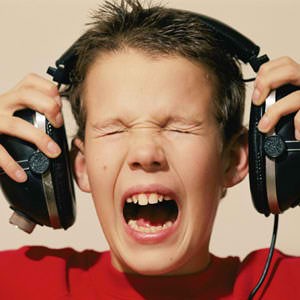

The National Institute of Deafness and Other Communication Disorders or NIDCD have recently funded a study with the objective of determining how prolonged noise exposure to sounds averaging 85 decibels and above could increase the risk for hearing loss.
This study was brought about by an increasing public concern regarding many devices, that even the children of today have access to, that can produce noise levels much higher then this experimental threshold. An average MP3 player on it's loudest setting is capable of producing sounds that reach up to 105 dB, A level that is 100 times more intense than 85 dB.
According to the study, repeated chronic exposure to extremely loud sounds will it eventually cause permanent damage to the sound receivers inside the ear, or the hair cells. These cells convert sound energy into electrical impulses that are sent to the brain. If these hair cells are damaged, they may not grow back and this will cause noise induced hearing loss. This condition affects about 15% of the American population who are between the ages of 20 and 69.
In a never before released study, neuroscientists at the University of Texas claim that the results of their research shows how noise induced hearing loss (NIHL) also affects the brain's ability to recognize speech sounds. This piece of information is highly valuable since, before this study, the effects of NIHL on the brain's ability to respond to speech were unclear. Based on the controlled studies, exposure to high frequency noise of up to 115 dB resulted in moderate hearing loss, while exposure to sound levels of up to 124 dB induced severe hearing loss. Although the extent of damage was different, both types of hearing loss have been found to affect the responses of the auditory cortex to speech sounds. The auditory cortex is a part of the brain that processes sound.

